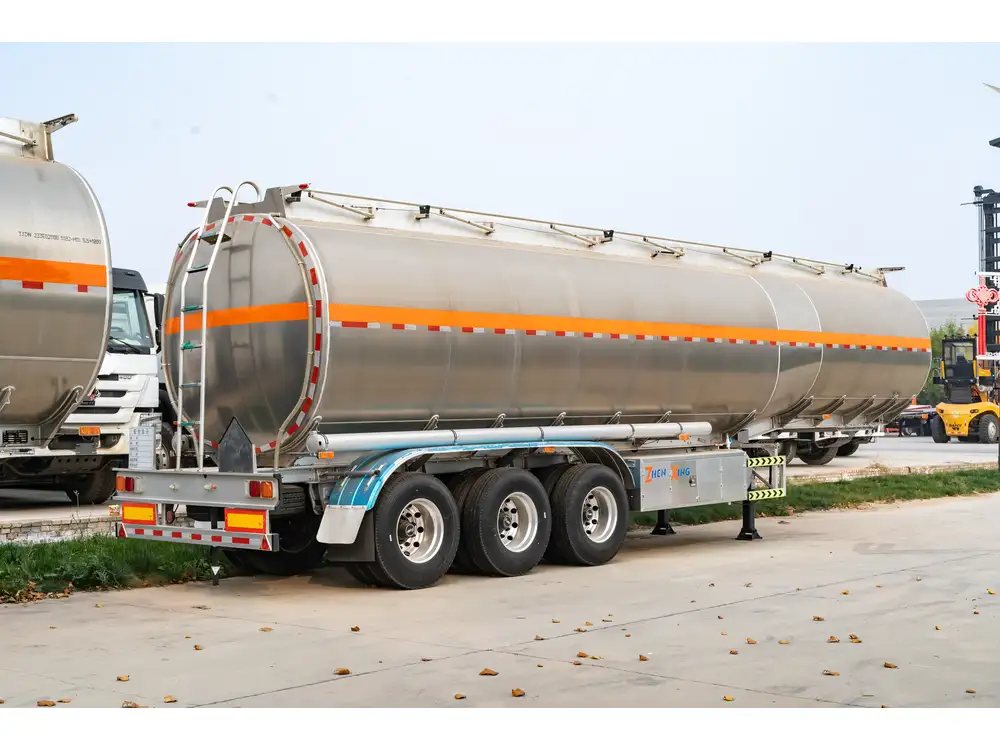In the ever-evolving landscape of transportation and logistics, understanding the standard lengths of semi-trailer sizes is essential for manufacturers, fleet operators, and logistics managers alike. This knowledge not only impacts vehicle design and regulatory compliance but also plays a vital role in optimizing freight efficiency and maximizing payload capacity.
Overview of Semi-Trailer Dimensions
Semi-trailers, integral to freight transport, are designed to be towed by a truck tractor. They come in various sizes and configurations to accommodate diverse cargo types. The most common semi-trailer combinations consist of a truck tractor and a semi-trailer, typically measured by length, width, and height.
Standard Lengths: The Key Figures
- 53 feet: The most common length for standard semi-trailers used in the freight industry, allowing for maximum cargo capacity.
- 48 feet: A popular alternative, particularly in regional transportation, providing flexibility for various cargo types.
- 45 feet & 40 feet: Used for specialized loads, shorter trailers are often seen in urban deliveries and specialized freight applications.
| Trailer Length | Common Application | Cargo Capacity |
|---|---|---|
| 53 feet | Long-haul freight, general cargo | Typically up to 26,000 lbs |
| 48 feet | Regional transport, versatile applications | Typically up to 22,000 lbs |
| 45 feet | Specialized loads, urban deliveries | Typically up to 20,000 lbs |
| 40 feet | Short-haul, specialized industries | Typically up to 18,000 lbs |

Understanding Variations in Length Regulations
The Federal Motor Carrier Safety Administration (FMCSA) establishes length regulations that vary by state. It is imperative for operators to be aware of these regulations to avoid penalties and manage logistics effectively.
- Interstate regulations typically allow for longer trailers on federal highways.
- Intrastate regulations may impose stricter limits, often necessitating adjustments based on local laws.
Factors Influencing Semi-Trailer Length
A multitude of factors influence the selection of semi-trailer lengths, including:
- Type of Cargo: The nature of the cargo being transported often dictates trailer size.
- Transport Distance: Long-haul routes may benefit from larger trailers, while short, urban deliveries may require smaller dimensions.
- Weight Considerations: Weight restrictions mandated by state regulations can limit trailer lengths.
- Road and Bridge Infrastructure: Road dimensions and bridge clearances, particularly in urban areas, often impact the choice of trailer size.
Standard Widths and Heights: The Complete Picture
While lengths dominate discussions, widths and heights are essential for overall trailer specifications.
- Width: Standard semi-trailers generally measure 8.5 feet (102 inches) wide.
- Height: Height varies significantly, but common designs range from 13.5 to 14.5 feet.
| Dimensions | Standard Measurement |
|---|---|
| Width | 8.5 feet (102 inches) |
| Height | 13.5 – 14.5 feet |

Importance of Width and Height
The width and height of semi-trailers are as crucial as their lengths. They determine:
- Aerodynamics: Wider and taller trailers can affect fuel efficiency.
- Stability: Wider trailers often provide better stability during transport.
- Compatibility: Ensure compliance with state and federal transportation regulations.
Industry Trends Impacting Trailer Lengths
As the transportation industry evolves, several trends are reshaping the standards for semi-trailer sizes.
Increase in E-commerce and Last-Mile Delivery
The surging e-commerce market necessitates innovative transport solutions. As a result, shorter trailers (~24 to 26 feet) are gaining traction for last-mile delivery, allowing for agile navigation in urban settings.

Advancements in Fleet Management
Fleet operators are leaning towards optimized trailer dimensions to enhance freight handling and reduce costs. Strategic combinations of lengths help facilitate bulk transport while minimizing operational expenses.
Green Initiatives and Environmental Compliance
With rising awareness of environmental impacts, operators are opting for more aerodynamic trailers, thus affecting overall lengths and capacities. Longer trailers offer better fuel efficiency, appealing to sustainability-minded logistics providers.
Optimal Selection: Determining Your Needs
When determining the appropriate semi-trailer length, several considerations come into play:
- Assess Cargo Type: Identify the nature of the cargo (e.g., dry goods, refrigerated items) and its dimensional requirements.
- Evaluate Transport Routes: Analyze the routes to ensure trailer dimensions conform to statutory regulations and infrastructure limitations.
- Balance Capacity and Compliance: Choosing between maximum payload capacity and adhering to legal dimensions is crucial.

Key Questions to Consider
- What cargo will you be transporting? Understanding load dimensions helps pinpoint the ideal trailer length.
- How will routes impact selection? Consider the types of roads, bridges, and potential turns.
- What are the state-specific regulations? Knowledge of state laws facilitates compliance and smooth transport operations.
Conclusion: Finding the Right Semi-Trailer Length
Selecting the optimal length of a semi-trailer requires careful consideration of various factors: cargo type, operational routes, and regulatory requirements. The standard lengths—53 feet, 48 feet, 45 feet, and 40 feet—offer distinct advantages depending on the specific use case.
Ultimately, balancing capacity with compliance ensures that logistics operations run smoothly and efficiently in the dynamic world of freight transport.
Further Reading and Resources
To delve deeper into the subject of semi-trailer dimensions and their broader implications, consider the following resources:
- Federal Motor Carrier Safety Administration (FMCSA): Up-to-date regulations regarding trailer lengths and weights.
- National Trailer Dealers Association (NTDA): Insights into the latest trailer designs and innovations.
- American Trucking Association (ATA): Research and reports on industry trends affecting transport decisions.
By understanding the nuances of semi-trailer dimensions, operators can optimize their logistics processes, leading to improved efficiency, cost savings, and enhanced customer satisfaction.



